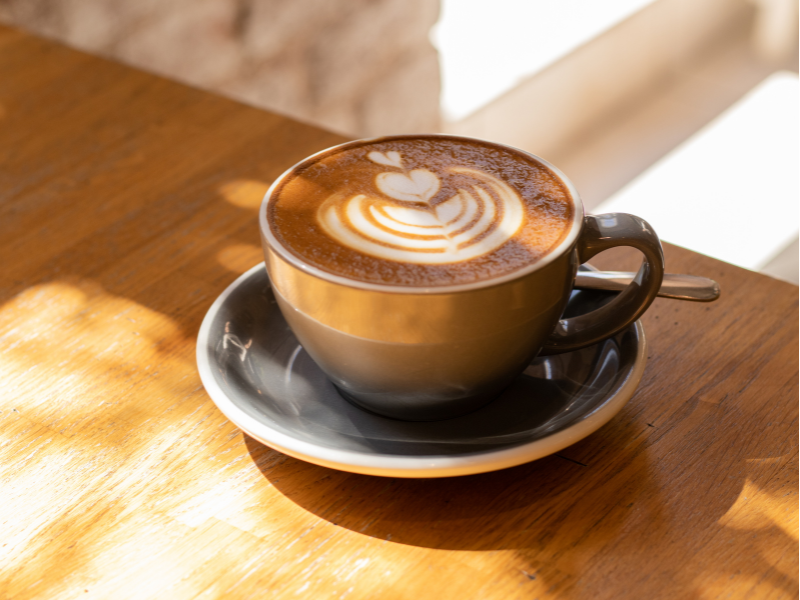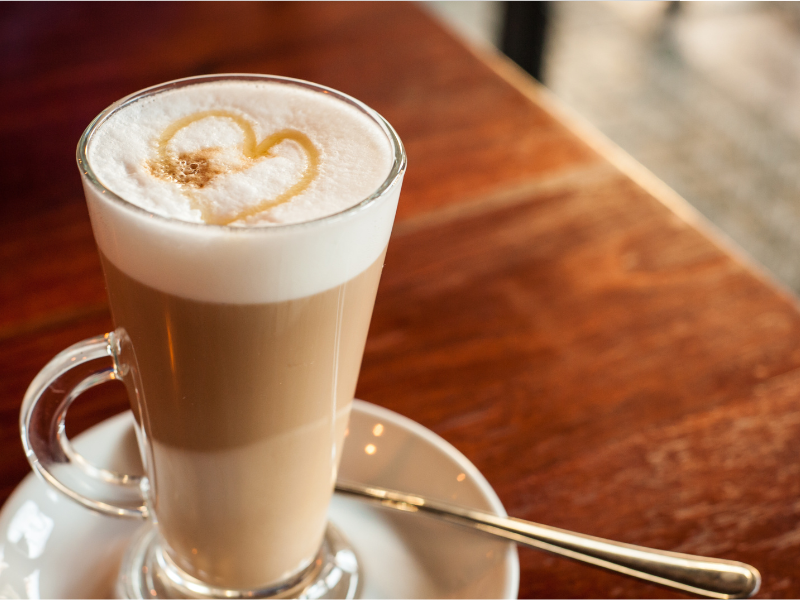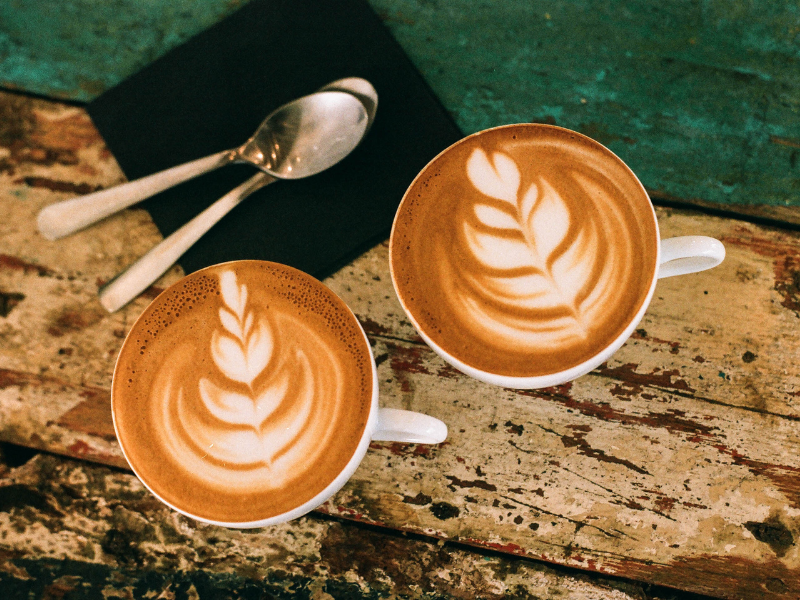Latte vs Cappuccino, what’s the real difference? Coffee is more than just a way to start the day these days; for some people, it’s a daily luxury, a cultural practice, and a ritual. The latte and the cappuccino are among the most consumed espresso-based beverages. Both beverages have their roots in espresso and steamed milk, yet they provide various tastes, textures, and experiences. So what makes them different? In this guide, we’ll dissect the actual differences between a latte and cappuccino so you can order—and brew—your favorite with confidence.
What Is in a Cappuccino?

Espresso, steamed milk, and froth milk are combined in equal amounts to make the Italian coffee beverage known as a cappuccino. The original proportion is:
1/3 espres, 1/3 steamed milk, 1/3 foamed milk
This composition provides cappuccinos with their characteristic strong flavor and light, smooth texture. The layer of foam is dense and thick, strong enough to be topped with a sprinkle of cinnamon or cocoa powder. The strong flavor of espresso is more intense in cappuccinos because the milk content is less than other beverages.
Cappuccinos are normally served in 6-ounce cups, providing a stronger coffee experience.
What Is in a Latte?

A latte, short for caffè latte (which literally is “milk coffee” in Italian), is more milky than a cappuccino. It’s composed of:
1 shot of espresso
6–8 oz of steamed milk
A thin layer of milk foam on top
Lattes are creamier and have a softer, more delicate flavour than cappuccinos. Lattes are usually served in 8–12 oz cups, so they’re a bigger and often more filling drink.
Thanks to the higher milk content, lattes are a popular choice for those new to espresso or those who prefer a less intense coffee flavor. They’re also the base for many flavored coffee drinks like vanilla or caramel lattes.
Is a Cappuccino or Latte Healthier?
When it comes to health, the answer depends on what you’re looking for—lower calories, less sugar, or more nutrients.
Calories: Because a cappuccino has less milk, it generally contains fewer calories than a latte. Depending on size and milk type, a latte can have anywhere from 120 to 180 calories, whereas a normal cappuccino made with whole milk has about 70 to 80 calories.
Sugar: If you’re drinking your coffee unsweetened, the sugar content mostly comes from milk. Lactose (milk sugar) is naturally higher in lattes since they contain more milk.
Calcium and Protein: Lattes offer more calcium and protein due to the increased milk volume, which could be beneficial if you’re looking for a nutritious boost.
So, if you’re watching your calorie intake, cappuccino is likely the better option. But if you’re looking for a more filling and calcium-rich drink, latte takes the lead.
How They’re Made
While both beverages start with a shot of espresso, the process of preparing milk is what actually distinguishes them.
To Prepare a Cappuccino:
Take about 1 ounce of espresso.
Steam the milk to form a thick, heavy foam. The idea is to add more air for a frothy top.
Pour steamed milk and foam over the espresso in a 1:1:1 proportion of espresso, steamed milk, and foam.

To Prepare a Latte:
Pull a shot of espresso.
Steam the milk to produce a small amount of microfoam—a silky, creamy texture.
Pour steamed milk over the espresso, with a thin layer of foam on top.
Baristas frequently employ the texture of the milk in lattes to make stunning latte art,something that’s more difficult with the thicker foam of a cappuccino.
Key Differences
Let’s go over the key differences between a latte and a cappuccino:
| Feature | Latte | Cappuccino |
| Espresso Content | 1 shot | 1 shot |
| milk ratio | The Steaming milk and less froth | Milk and foam in equal amounts |
| Texture | Creamy and smooth | Frothy and airy |
| Flavor | Milder, milk-forward | Stronger coffee flavor |
| Serving Size | 8–12 oz | 6 oz |
| Calorie Count | Higher | Lower |
In short, if you want a creamier, bigger coffee drink with milder flavor, the latte is the drink for you. If you prefer a more robust espresso flavor with a foamier texture, the cappuccino could be your choice.
Nutritional Value
Let’s see the average nutritional content of each beverage (based on 1 cup prepared with whole milk and no added sugar):
| Nutrient | Latte (8 oz) | Cappuccino (6 oz) |
| Calories | 120–180 | 70–80 |
| Protein | 6–10g | 4–5 g |
| Fat | 6–8 g | 4–5 g |
| Calcium | 20–30% DV | 10–15% DV |
| Sugar (natural) | 10–14 g | 6–8 g |
| Caffeine | 63–75 mg | 63–75 mg |
Note: These estimates may differ based on milk type (skim, soy, oat, almond) and serving size. Plant-based milk or non-fat choices can drastically alter the nutritional content.
Conclusion
Although both cappuccinos and lattes share a common espresso foundation, each provides a very different coffee experience.

Pick a latte if you like a more subtle, milkier beverage that’s creamy and smooth.
Pick a cappuccino if you like a strong espresso flavor with a rich, foamy texture.
In the end, everything depends on personal preference. You can either sip on a warm cappuccino or drink a latte with stunning artwork, and both of them are classics for a reason. Why not experiment with both and see which of them captures your heart (and palate)?
